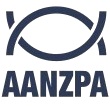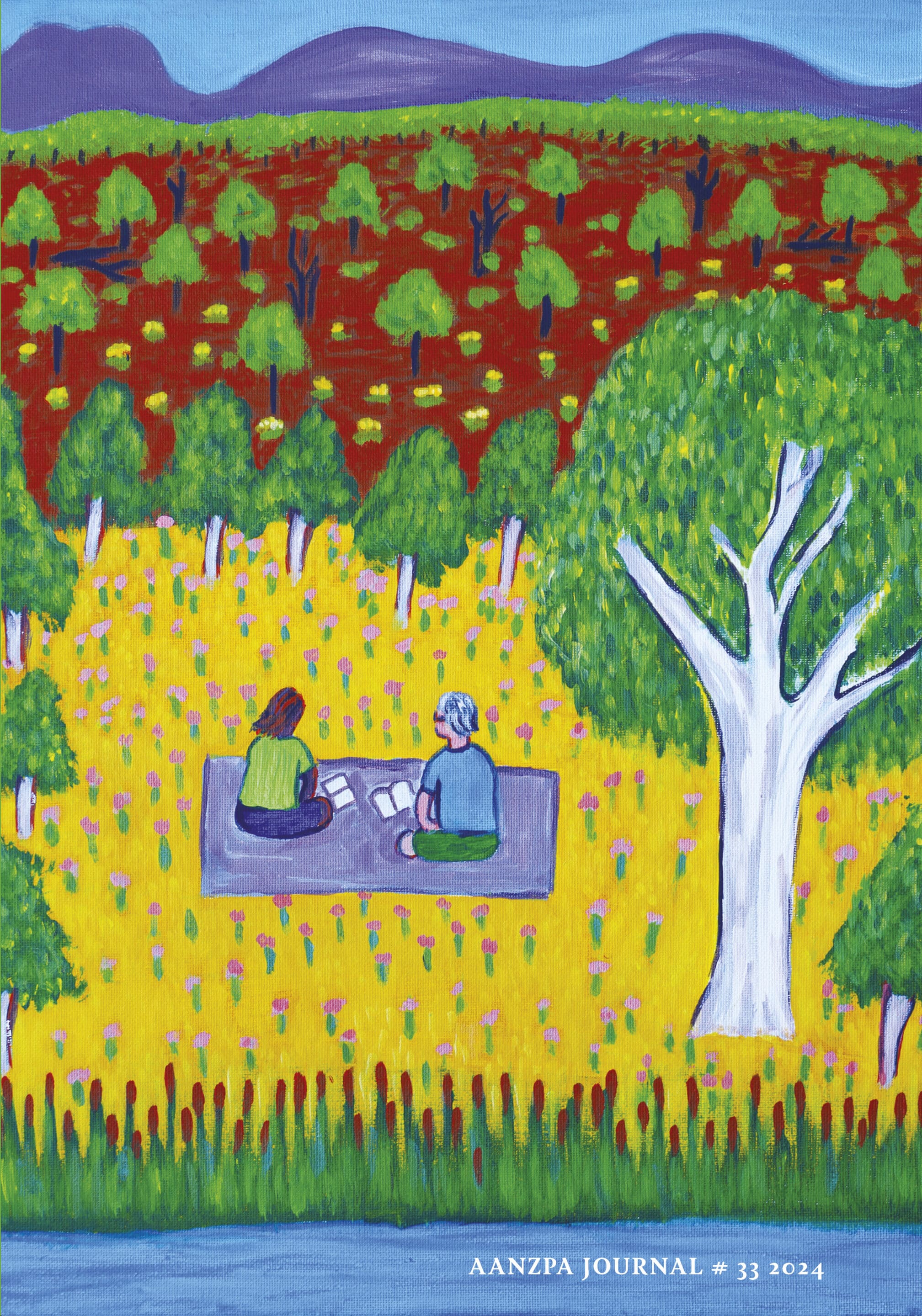Journal
The AANZPA Journal
Current Journal Editor: Diana Jones
Email: journal-editor@aanzpa.org
The AANZPA Journal is published by the Australian and Aotearoa New Zealand Psychodrama Association (AANZPA). AANZPA is an organisation of people trained in Dr J.L. Moreno’s psychodrama theory and methods, and their application and developments in Australia and Aotearoa New Zealand.
The purposes of AANZPA include the establishment and promotion of the psychodrama method, the setting and maintenance of standards and the professional association of members. The AANZPA Journal has been established to assist in the fulfilment of these purposes through the dissemination of high quality written articles focused on psychodrama theory and methods, and their application by practitioners in Aotearoa New Zealand and Australia. The intention is to deepen theoretical and methodological understanding and broaden application.
Contributors
Contributors to the AANZPA Journal are welcomed by the editor on the following understanding:
- The contributor is a member, an associate member or associate affiliate member of AANZPA, a trainee enrolled in an AANZPA accredited training institute, or a person who is linked to AANZPA and negotiates inclusion at the discretion of the editor.
- The article is not currently submitted or published elsewhere, nor will be in the future.
- The article is not currently being written, supervised or examined as part of AANZPA’s accreditation processes.
- The copyright for all material published is assigned exclusively to AANZPA, including the right to reproduce the article in all forms and media. However, AANZPA will not refuse any reasonable request by a contributor to reproduce an article.
Articles
- Articles might focus on one or more of the following areas:
- An exploration of psychodrama’s underlying philosophies, principles and theoretical considerations
- An application of the psychodrama method to a particular field of endeavour, social system or population
- An examination of what psychodrama has to offer, and can learn from, other approaches to the fields of human relationships and human potential
- A response to previously published articles and reviews
- Articles are accepted and published on the understanding that the opinions and views expressed therein remain those of the authors and do not necessarily reflect the perspectives and recommendations of the journal editor or AANZPA.
- Articles may include case illustrations or research from the writer’s professional experience and practice.
- Tables, diagrams and other illustrative tools to enhance understanding is encouraged and, within reason, will not add to the word count.
- Articles typically range between 2,000 and 3,500 words, although this can be re-negotiated between the contributor and the editor.
- A short abstract and key words section should accompany the article to assist the reader’s warm up and to help in the dissemination and citing of AANZPA Journal articles internationally.
- A reference section is required for literature that is cited in the article, and a short bibliography of related but un-cited material is also acceptable. The AANZPA Journal uses the American Psychological Association (APA) reference system with some slight variations, which are attended to by the editor in the final edit.
- The journal’s design and layout process is made easier when contributors provide their articles in simple format, free of headers, footers, borders, tabs and complicated style types.
- Contributors are asked to provide a digital photograph and short biographical description that establishes their professional identity, work and current focus, as well as an email address if they wish to be contacted by readers.
- As a token of appreciation, each contributor to the AANZPA Journal receives two copies of the issue in which their article is published.
The Writing and Editing Process
The writing and editing process for the AANZPA Journal is designed to support contributors and enhance their work, as well as to maintain high quality contributions for the benefit of the journal’s readership and reputation. The development of an article has evolved into a tiered, overlapping process that includes these steps:
- A potential contributor who is motivated to submit a paper enters into a dialogue with the editor focused on their ideas and plans for the article. Role reversal with the readership is encouraged.
- The editor and contributor decide collaboratively on a person who might act as a main editorial guide to assist the writer in the development of the article. The editor then approaches the potential editorial guide on behalf of the contributor to facilitate a productive working relationship. A separate document called The Role of the Editorial Guide is provided to both parties to clarify the role expectations.
- As the contributor develops the article, the editorial guide provides consistent consultation and support regarding its content and structure, and will encourage the writer to seek further input from psychodrama peers and other colleagues. It is important to note that fine-tune editing and proofing are not necessarily required during this process, as these are undertaken by the journal editor with the writer on receipt of the completed article.
- Articles in the AANZPA Journal are reviewed by at least two peers. Moreover, as they develop their articles, contributors are encouraged to seek further collegial consultation and support. This may include responses from, discussion with and input by editorial guides, psychodrama colleagues and peers in other fields of endeavour. The connections that develop amongst writers, editorial guides, colleagues and peers are viewed as an important part of the writing process and often result in progressive role development, learning and enjoyment for all parties. An added positive outcome is the building up of the sociometry of AANZPA.
- The deadline for the completion of the writing process is 01 July, after which time the article can be submitted to the editor who will undertake close editing and proofing in collaboration with the writer.
The Role of the Editorial Guide
The editorial guide builds a collaborative relationship with the contributor, warming up to roles that will assist the writer to complete the article in a timely manner and to a high standard. The precise naming of this role is an evolving endeavour and best efforts to date have delineated a cluster of complementary roles. My grateful thanks to Mike Cormack for his input in this endeavour.
Architect
From the outset discuss with the writer the intention of the article, its purpose, logic, structure, shape, overall flow, theoretical underpinnings and the selection of examples to be included. What sort of piece is it and how will it work?
Morenian Thinker
Assist the contributor to think and write from a Morenian perspective, founding the article on Morenian theory and making use of psychodrama principles and practices throughout.
Sounding Board
Respond to ideas, tensions, conflicts and anything else that emerges as the writer comes to grips with the piece.
Cheerleader
Assist the writer to sustain their warm-up, which often means reassuring and encouraging them when anxiety, perfectionism or procrastination emerges.
Coach
A keeping-on-track function. Sometimes writers can get caught up in the detail and lose sight of their original overall intention. It is important to help them keep an eye on the bigger perspective by comparing the detail of the work-in-progress with the purpose and structure agreed at the outset, and by making sure that different bits integrate successfully into a coherent whole.
Reviewer
Provide feedback from the perspective of the audience or different subgroups within the audience. Basically, you are responding to the writing with a fresh set of eyes and asking questions such as – am I engaged, am I curious, am I inspired, does it hang together, does it work well?
Copy Editor
Suggest improvements to the clarity of meaning, sentence structure, word precision, grammar and punctuation, and do this without taking over the contributor’s unique writing style. It is important that the writer’s voice remains and that s/he maintains ownership of the piece.
Peer Companion
Maintain connection and positive tele with the contributor so as to reduce any sense of isolation that may emerge during the process.
Double, Mirror and Role Reverser: Say no more…
In assisting a person to develop their writing, questions often emerge regarding the difference between supervising and editing. The following perspective, provided by Bev Hosking, may be helpful and do keep in mind that this is an area of overlap where flexibility is called for:
With supervision, you relate more to the development of the writer.
With editing, you relate more to the development of the writing.

